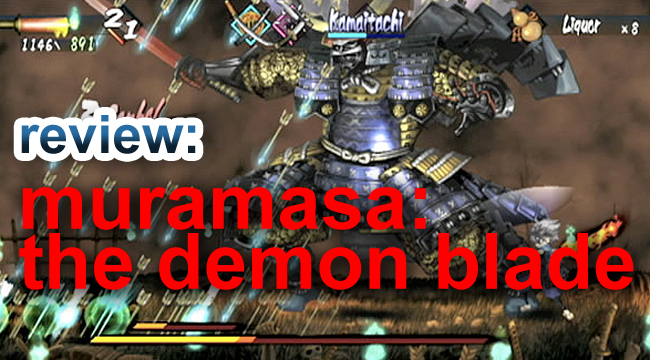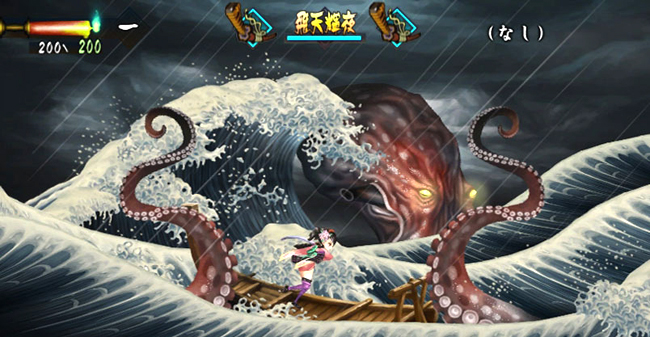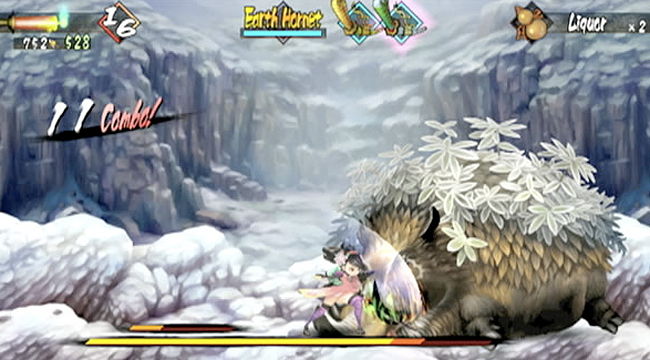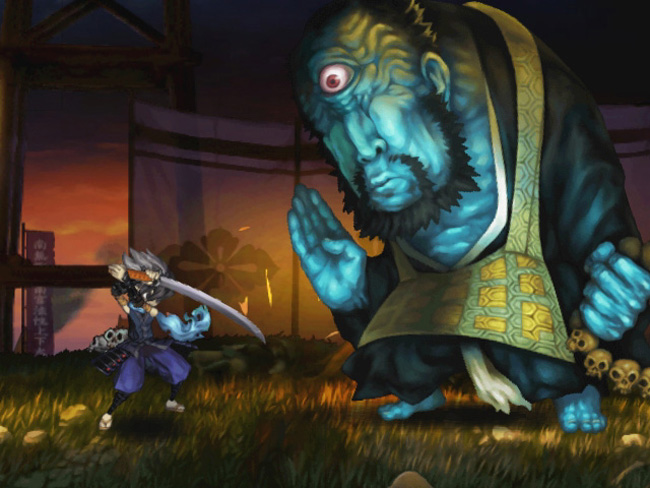
There is a definite “art” to creating a good 2D game. Inherent within this creation are several questions: Do I go retro with the visuals? High def? Do I make it 2.5D? Do I make it downloadable or disc-based? And, will it sell?
Ignition Entertainment faced several of these questions when given the chance to publish Muramasa: The Demon Blade created for the Wii by Japanese developer Vanillaware. Are the risks that Ignition took to localize the game for the US worth it for us, the gamers? At the very least, the game can be described in the most plain and simple way — absolutely gorgeous.

When I created the first draft of this review, I was going to go take the “Wii still has games for the hardcore” and “This is the game that Wii fans needed” angles. But soon, I realized that this game is actually something a bit different. When thinking about Muramasa, I asked myself if this could have been created and released for any other game system. The answer? Yes, most definitely. The reason? The classically inspired play mechanic is simple enough to understand, yet deep enough for a full experience. There are no worries about polygons, out-doing the competition, and selling 1 million copies.
The reason that Muramasa succeeds is that it is purely a game created for the love of creating a game.
Muramasa is the telling of two intertwining stories that take place in medieval Japan. The playable characters, Kisuke and Momohime, each have their own storyline and play-through on the world map. With the ability to forge over 100 mythical blades as their primary weapons, the protagonists trek across Japan defeating ninjas, demons, and gods in efforts to reach their goals.
Likes
– Visuals: Not enough can be said about the visuals. The images aren’t just mimicking paintings, they ARE paintings. The game is almost completely hand-painted, focusing on color, contrast, and texture. Every pixel has life to it, every layer has flow (parallax scrolling FTW!). Every scene is memorable. Even the cooking sequences are stunning. By going back to gaming’s 2D roots, Vanillaware has created an experience that can be one of the most beautiful on any game console.
– Play Mechanics: The action and controls of Muramasa are very classically-inspired, like great 2D games from the height of the 16-bit era. There is a bit of arcade brawler influence in its combo system, keeping track of consecutive hits while I attack with special moves, high and low hits, and jumps. While both characters have extremely similar moves, the battles are quick, fun, and provide constant action.
– Giant Bosses: I’ve longed for the return of giant 2D bosses, and Muramasa proved to be the prodigal game. With tens of bosses, most surpassing the size of the screen, I was hooked and happy to wage battles that often lasted a half-hour to complete. Much like anticipating the preview trailers during a Summer blockbuster movie I looked forward to every boss fight, wondering what kind of crazy enemy I would be thrown at next.
– Depth: Each quest takes about 7-8 hours to complete, including some light level-grinding to acquire more powerful swords. On top of that, an extra 4-6 hours can be added for the post-game extras, bringing the total playtime to 20 hours. The characters have a surprising amount of depth once combos are learned and weapons forged, turning each battle into a magnificent on-screen dance that is ferociously violent and beautiful at the same time. While not as deep as a standard RPG with respect to character customization, the inclusion of items and skill boosts add an extra layer that is well-received.

Dislikes
– Controls: While Muramasa allows for many control methods, I usually play a Wii game first with the WiiMote and Nunchuck. The layout of the buttons is decently mapped, but there were several times I found myself frustrated. Pressing up to jump with the analog stick on the Nunchuck is unresponsive at times, causing me to miss combos when trying to avoid attacks. The lack of projectiles (the game’s attacks rely solely on the sword and special skills) makes for a very one-sided attack method, especially if you’re unfamiliar with creating combos.
– Repetition: While Muramasa’s artwork is truly stunning, it reuses assets all too often. One section of the game had, what seemed like, 6 scenes of the same level and 8 identical enemies. With the scenes mostly being laid out horizontally, the lack of any real vertical space is disheartening. In fact, the majority of the scenes can be completed without ever jumping, just holding left or right. At first, I would have thought that the designers were being lazy if I didn’t realize that the game prided itself on that old-school Japanese aesthetic. Regardless, Momohime’s quest at least has several locations to visit, including Heaven and Hell, that provide some variety.
And Finally…
Muramasa‘s developers created the game with a specific vision and held to it firmly. In most respects they succeeded well beyond what I had anticipated, minus a few bumps along the way. In fact the only real faults of Muramasa are in its design selection, not the technical aspects or the console that it appears on. I would think that the game, even in its current form, would be just as enjoyable and visually striking on any console or handheld that it was released on.
This is classic gaming in a modern world. Muramasa touches on a feeling that many older generation players have been missing for a while: the goal isn’t to have a transcendental experience every time I play a game. The only goal is to get from Point A to Point B in the one of the most visually striking, well-animated, memorable ways possible. I had fun with Muramasa. It won’t change my life; it won’t replace Uncharted 2; it won’t take time away from ODST. It isn’t “the best game on Wii” nor is it the best game that was released in September. But it will be one of those games that I get an itch to play every year or so when I start to miss the glory days of the 16-bit era.

Publisher: Ignition Entertainment
Developer: Vanillaware
Released: September 2009
Available for: Nintendo Wii


1 Comment